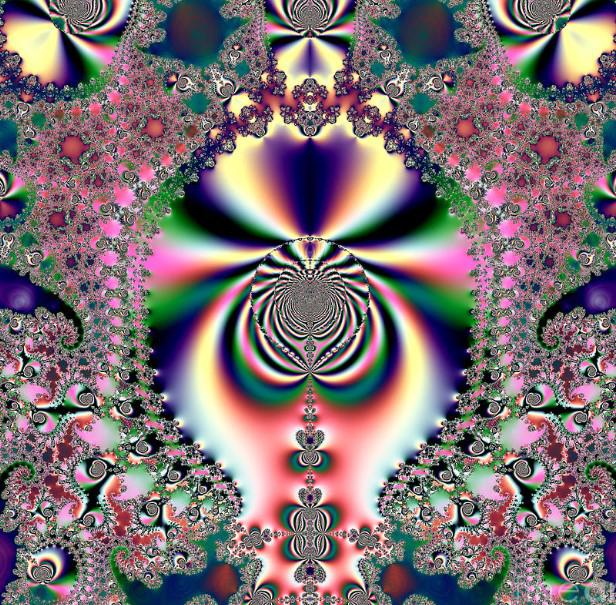
What if I told you that the iPhone in your pocket and the psychedelic journey people talk about are connected? It might sound far-fetched, but there’s a deep relationship between technology and psychedelics, one that shows up in the way we experience reality, tap into creativity, and seek to understand the mind. At the core of this connection is something even more fascinating: fractals.
In the 1960s and 70s, a tech revolution was beginning in Silicon Valley. Interestingly, many of the pioneers who brought us the computers and software we rely on today were also experimenting with psychedelics. Steve Jobs, for example, spoke about how LSD opened his mind and sparked his creativity. For these early tech visionaries, psychedelics seemed to provide a gateway to fresh perspectives and problem-solving techniques—qualities that are essential in the innovation world.
Psychedelics change how humans think. They let people break out of everyday thought patterns, allowing for new, unconventional ideas to surface. In the same way, developing software or designing technology often requires a similar break from the usual path. The goal isn’t just to create something functional; it’s to envision something entirely new, like an immersive digital world or an intuitive user interface. Psychedelics inspired these innovators to see beyond the ordinary and dream of technology that could transform how we experience reality. It allowed products like Facebook and Apple to focus on user experience when developing which was outside of the normal thought pattern.
Fractals are at the heart of this psychedelic-tech connection. But what are fractals, exactly? Think of them as infinitely repeating patterns—patterns that show up in nature (like tree branches, river networks, and even your veins) and can also be generated by computers. They’re self-similar, which means if you zoom in or out, you’ll keep seeing similar shapes repeating themselves.
Under psychedelics, people often report seeing fractal-like visuals—intricate, colorful patterns that seem to go on forever. These fractals don’t just look cool; they’re a natural result of how the brain interprets complex, interconnected information. Some scientists even believe that fractals might represent how our brains process thoughts, which would explain why fractal patterns show up during altered states of consciousness. Computers can generate fractals too, based on complex mathematic systems like the Mandelbrot set, creating immersive visual experiences that mimic what people report seeing on psychedelics. Think of it as a kind of virtual trip, one that lets you explore a digital fractal world from your couch.
Both psychedelics and technology are exploring a common goal: understanding and expanding human consciousness. In the field of artificial intelligence, for example, researchers are looking at how the brain works to model it in machines. Psychedelics, meanwhile, help us experience new states of awareness, sometimes revealing hidden aspects of our minds. To put it simply, both are trying to answer similar questions—how does the mind work, and how can we use it to create, understand, and evolve?
Fractals help bridge this gap. Mathematically, they’re a language of self-similarity and repetitiveness, ideas that also show up in how we think and perceive. This connection might even suggest that the structure of consciousness itself has a fractal quality, where thoughts build upon thoughts, ideas fold back into themselves, and everything feels interconnected. Psychedelics can bring us face-to-face with this self-similarity, while computers let us model and understand it.
So, where does this leave us? Both psychedelics and technology push us toward something larger. Fractals represent this infinity beautifully; they’re patterns that you can zoom into forever, always finding new detail and depth. Psychedelics offer a similar experience, as does VR or even just staring into a screen full of fractal art. The more we dig into the potential of technology and the mind, the closer we get to uncovering the vastness that lies within and around us.
In the end, the relationship between psychedelics, technology, and fractals is about exploration. Both open doors to places we’ve never been, whether it’s through a computer screen, a headset, or a journey inward. They remind us that reality is far more complex than we often realize, and that with the right tools, we can go further, see more, and better understand our place in the universe.